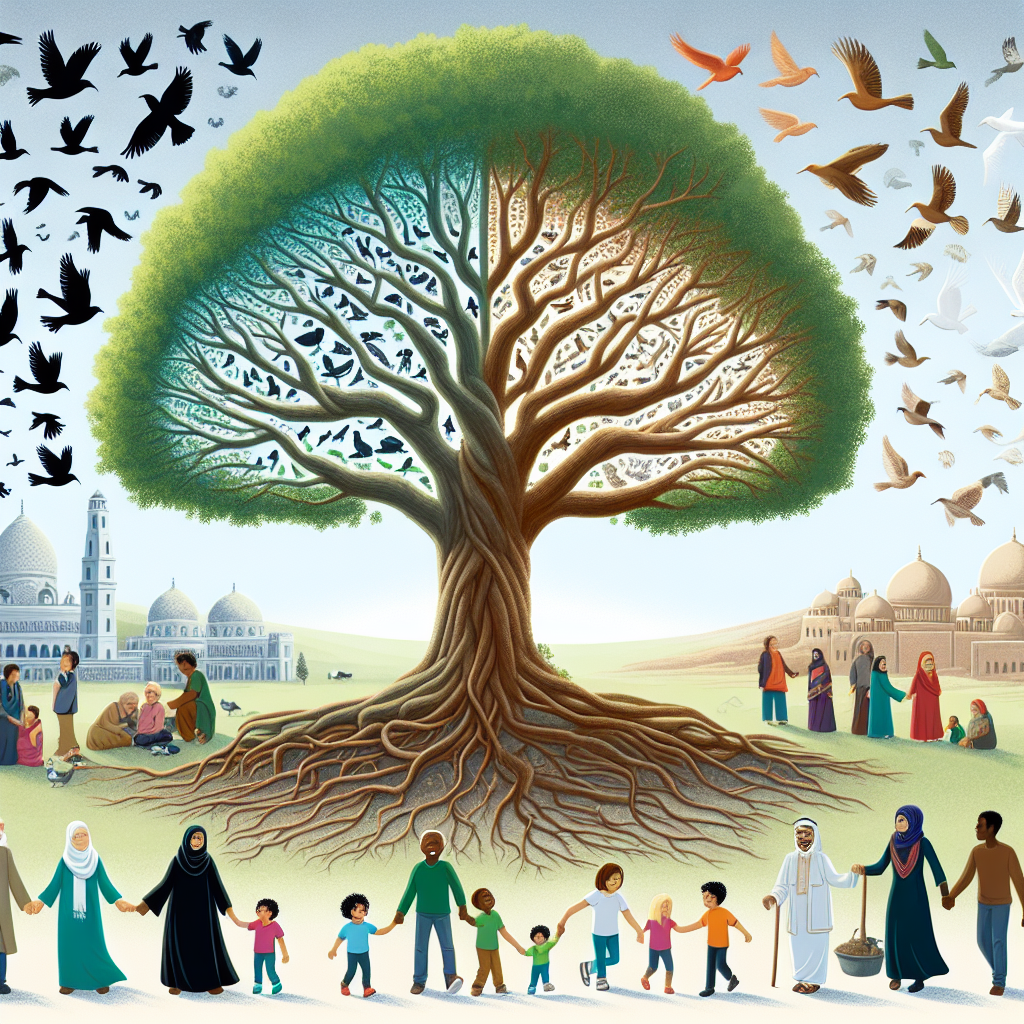
Introduction
In a world where technology often supersedes traditional values, nurturing healthy family relationships can feel like an uphill battle. From Roots to Wings: Nurturing Healthy Family Relationships in a Modern World encapsulates the essence of what it means to foster connections that are both deep and resilient across generations. But what does this truly entail? As the pace of life quickens, and distractions abound, the bonds that hold families together risk fraying. Here, we dive deep into practical strategies and insights to help families not just survive, but flourish in this modern age, striking a balance between heritage and progression.
The Value of Healthy Family Relationships
Understanding the Foundations
Healthy family relationships serve as the bedrock of emotional well-being. Research indicates that children raised in supportive environments tend to have better mental health, higher academic achievements, and stronger social skills. In contrast, fractured familial ties can lead to various emotional and psychological challenges.
Table 1: Benefits of Healthy Family Relationships
| Benefit | Explanation |
|---|---|
| Emotional Support | Provides a safety net during challenging times. |
| Stability | Offers a predictable environment for growth. |
| Stronger Communication Skills | Enhances interpersonal skills from a young age. |
| Improved Mental Health | Reduces the risk of anxiety and depression. |
| Enhanced Resilience | Aids in navigating life’s storms together. |
Case Study: The Johnson Family
The story of the Johnson family illustrates the transformative power of healthy relationships. Facing various challenges, including career pressures and teenage rebellion, they implemented regular family meetings. These gatherings allowed each member to share frustrations, hopes, and dreams, ultimately cultivating understanding and empathy.
The gradual shift in family dynamics not only reduced conflicts but also fostered resilience. Over the years, the Johnsons have become a prominent example of how proactive communication can heal and reinforce familial bonds.
Cultivating Strong Foundations: Roots
Embracing Tradition
Traditions serve as the glue that binds families. Whether it’s weekly dinners, annual vacations, or seasonal celebrations, these rituals instill a sense of belonging and continuity. From Roots to Wings: Nurturing Healthy Family Relationships in a Modern World requires an appreciation of the past while looking toward the future.
Table 2: Examples of Family Traditions
| Tradition | Benefit | Frequency |
|---|---|---|
| Family Game Night | Strengthens bonds through fun | Weekly |
| Annual Family Reunion | Reinforces extended family ties | Yearly |
| Seasonal Cooking | Connects generations through recipes | Monthly |
Communicating Effectively
In a time of instant messaging and social media, genuine, face-to-face communication can often take a backseat. Prioritizing open conversations builds trust and allows for a deeper understanding of one another’s perspectives. Tools such as "I feel" statements can help express emotions without placing blame, promoting a culture of empathy within the family.
Case Study: The Nguyen Family
The Nguyen family faced communication breakdowns, leading to misinformation and assumptions. By learning to use “I feel” statements, they transformed their dialogues from confrontational to constructive. This shift significantly reduced conflicts, paving the way for deeper connections.
Spreading Your Wings: Growth and Adaptation
Embracing Change Together
As families evolve, so must their definitions of relationships. The entrance of technology, globalization, and differing societal norms can create rifts if not managed properly. Encouraging adaptation and empathetic listening can help families navigate these changes together.
Chart 1: Factors Leading to Family Change
| Factor | Effect on Family Dynamics |
|---|---|
| Technology | Increased distraction, reduced face-time |
| Work-Life Balance | Time scarcity affecting relationships |
| Societal Norms | Challenging traditional roles |
Constructive Conflict Resolution
Conflicts are inevitable in any relationship; however, how families manage disagreements defines their resilience. Adopting a mindset focused on problem-solving rather than blame can foster an atmosphere of cooperation. Techniques like collaborative problem-solving encourage all family members to contribute to resolutions, reinforcing their commitment to the family unit.
Case Study: The Smith Siblings
When sibling rivalry escalated in the Smith household, parents introduced a structured conflict-resolution strategy. By setting ground rules for discussing disagreements, the siblings learned to work through disputes amicably, ultimately nourishing their relationship and trust in one another.
Building Emotional Intelligence
Teaching emotional intelligence is crucial in the modern world, where digital interactions often overshadow personal connections. Families should cultivate skills such as self-awareness, empathy, and emotional regulation. This can be achieved through practices like mindfulness and emotional check-ins, helping members to better understand their feelings and those of others.
The Societal Role: Community as An Extension of Family
The Importance of Community Support
Healthy family relationships do not exist in a vacuum; they are enhanced by the communities that surround them. Engaging in communal activities, and building connections with neighbors, can create an extended support network.
Case Study: The Garcia Family
The Garcias utilized local community resources to strengthen their family ties. By participating in community service and local events, they not only fostered friendships but also instilled a sense of social responsibility in their children. Their commitment to the community reinforced their family bond, illustrating the interconnectedness of family and community dynamics.
Leveraging Technology Wisely
In the era of smartphones and social media, it’s vital to find balance. Families can use technology to maintain connections, especially across long distances. However, establishing "tech-free" zones or times can promote genuine interactions, safeguarding against digital distractions.
Conclusion
From Roots to Wings: Nurturing Healthy Family Relationships in a Modern World captures the essence of fostering connections that endure through the ages. By embracing traditions, prioritizing communication, adapting to changes, and utilizing community support, families can create a thriving environment that nurtures individual growth.
As we navigate the complexities of modern life, let us remember that strong family bonds are not merely a relic of the past but a vibrant source of support that empowers us to face the world. Embrace your roots, spread your wings, and cultivate those invaluable family ties.
FAQs
1. How can I improve communication within my family?
Start with regular family meetings where everyone can share their feelings and thoughts openly. Use "I feel" statements to express emotions without placing blame.
2. What should I do if my family traditions feel outdated?
Revisit and revise family traditions regularly to reflect current interests, ensuring that they resonate with all family members.
3. How do I manage conflicts better within my family?
Implement a structured conflict-resolution strategy where each person can express their viewpoint and work collaboratively towards a solution.
4. How can technology help in nurturing family relationships?
Use technology to maintain connections through video calls and shared online activities. However, establish tech-free zones or times to foster face-to-face interactions.
5. Why is networking with the community beneficial for my family?
Community engagement creates a support network that fosters social skills and instills values such as teamwork and empathy in family members.
By weaving together our roots and embracing the winds of change, we can build thriving family relationships that stand the test of time.















